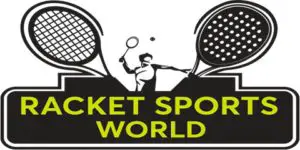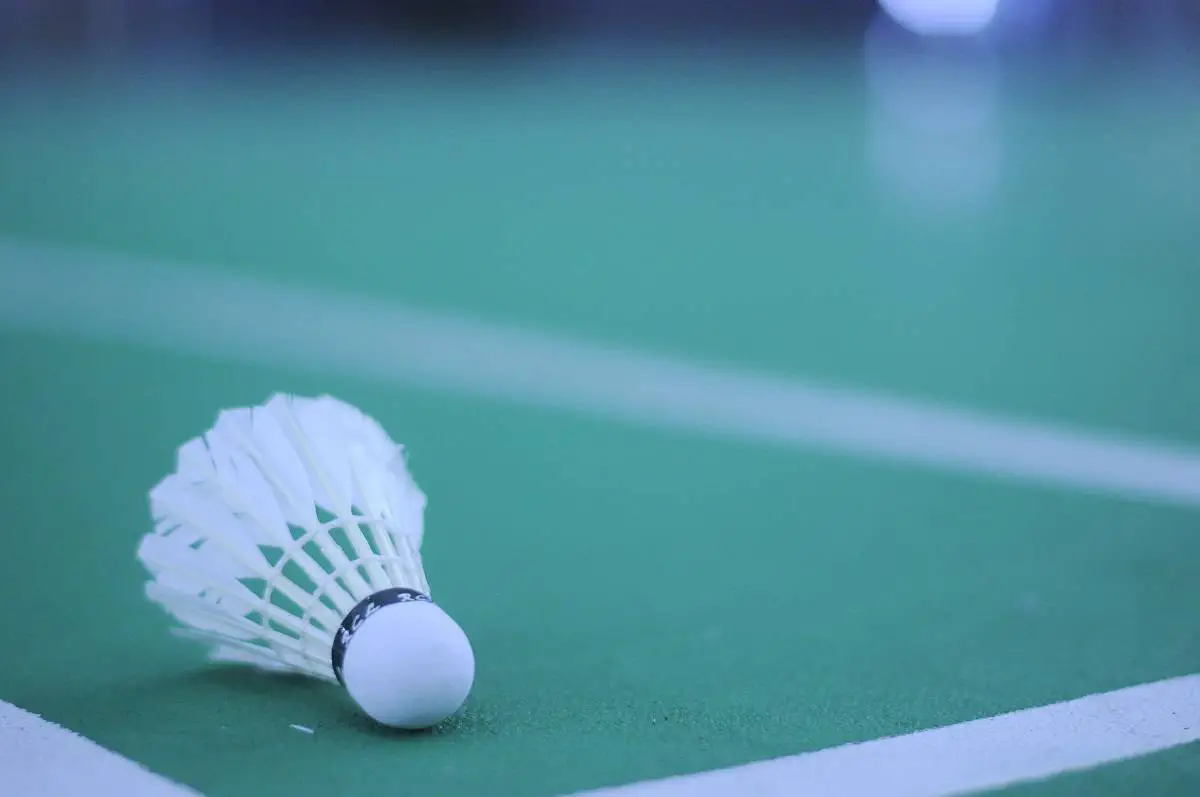A badminton shuttlecock has a lot to say for itself. And if you are looking to find out more information on shuttlecocks, including how it’s made, its fastest speed, here’s more.
A shuttlecock, also known as a shuttle, a bird or a birdie, is the ‘ball’ that is used in the game of Badminton. It is not so much a ball as an aero-dynamic projectile, one that is hit back and forth during the game. It is a device that flies and travels well, the most vital part of a Badminton game.
Table of Content
Why is it called a Shuttlecock?
Badminton used to be known as the game of shuttle, with shuttle referring to the back and forward motion of the game.
Anyone who knows the game of Badminton, or any racket and ball game, knows that the skill is in keeping the ball (shuttle) in play. The cock part of the Shuttlecock is because the device is made of cork and feathers, closely resembling a chicken.
Think of a chicken or cock with its tail in the air, feathers flying proud? That is a shuttlecock.
Also Read:
When was the name Shuttlecock first devised?
The game of Badminton has been around for centuries although it was only given the official Badminton name in the 1870s. The name Shuttlecock has been around for a lot longer than the name Badminton. It originated in the 1570s as the game grew in popularity.
More about the Shuttlecock name…
In colloquial terms, the shuttlecock is often referred to as a shuttle, which comes from the motion made during a rally between the two sides.
How is a Shuttlecock made?
If you are good with your hands, you can try and make your own Shuttlecock. All you need is some cork, feathers which can be real or synthetic and glue. Of course you don’t need to make your own shuttlecock, you can easily buy shuttlecocks online, at the sports store and even at a beach holiday store.
These are Shuttlecock specifications:
- 16 feathers, each about 70 mm in length
- Cork that is 25 mm to 28 mm in diameter
- Total weight around 4.75 to 5.50 grams.
The shuttlecock is conical in shape.
Whichever way the shuttlecock is hit, it is constructed in a way that it will remain in the air with the cork first at all times. This means your opponent hits the cork and not the feathers, keeping the shuttlecock airborne.
The feathers are embedded into the cork base that is rounded and usually covered in a strong but fine leather.
Note if you do not have real feathers, synthetic feathers are fine. Original shuttlecocks were made of duck or chicken feathers, and if you are a perfectionist, the feathers of different wings were never mixed. Shape and symmetry are important to ensure the perfect flight.
A shuttlecock with real feathers is often known as Feathers. A shuttle cock with synthetic feathers is often known as Plastic.
If you are playing Badminton and your opponent calls out ‘Pass the Feathers,’ you will know you are playing with a real shuttlecock.
Working with Shuttlecocks
Working with real feathers when making shuttlecocks is not a simple process. Feathers are fragile and if they are too dry, they break. Feather shuttles go through a humidifying process to ensure they last well and flex during the game.
If the feathers are too dry, the shuttlecock can undergo speed wobbles or fly too slow. If the feathers are too wet, the shuttle will go too fast.Getting the balance is important, and for this reason the humidification box was designed.
The feather shuttles go in the box to ensure they fly in the manner they were designed to fly, and that they last a long time.
Today you will also find that real shuttlecocks come with sponges that can be moistened and inserted into the feather end of the shuttle tube container, to ensure the right weight of the shuttle.
You will also note that there are different weight shuttlecocks for sale, depending on where you are, and the altitude. The height above sea level, and the humidity in the air, affect the flight of the shuttlecock.
How do you know which Shuttlecock to use?
Typically, if you are playing Badminton in the mountains of Switzerland, they will sell shuttlecocks that are right for the mountains of Switzerland.
The same goes if you are playing Badminton on the beach of Florida, USA. As a player, you don’t have to worry too much; it is likely the shuttlecocks for sale, or in play, are right for your area.
At badminton tournaments, it is up to the tournament organisers to ensure the right weight shuttlecocks are used. The International Badminton Federation, the IBF, has specific rules and regulations for the game. Shuttles are always tested prior to play.
A shuttle should travel from the base line of a Badminton court almost the full distance of the long doubles serve line on the other side of the court.
Plastic shuttle cocks will generally last a long time, but the real shuttlecocks made of real feathers may have to be replaced every few games, depending on the strength of the players. If the shuttlecock is not flying straight, then you know you have a problem.
A shuttlecock can be hit hard and fast, sometimes up to 320 km/hour, but it slows significantly as it starts to drop from the air.
Also Read:
What has been the fastest Shuttlecock speed ever?
In a match in the 2005 Sudirman Cup, Fu Haifeng hit a smash which went at a speed of 332 km/hr. This entered the Guinness World Records for the fastest recorded hit in the world across any sport. According to reports, the highest speed a badminton shuttlecock can record is nearly 500 km/hr.
Synthetic Shuttlecock the Way Forward?
According to latest badminton news, the Badminton World Federation has decided to go ahead with the use of synthetic feathers for shuttlecocks to try and reduce waste.
BWF has combined forces with Yonex as they look to manufacture a synthetic edition of shuttlecocks which was trialled at three international tournaments in 2019. And based on the feedback obtained, the durability of synthetic shuttlecocks was said to be more than the traditional shuttlecocks without any perceptible change in the performance.
The governing body said in a press release:
“…the synthetic feather shuttle could reduce shuttlecock usage up to 25%, providing a significant environmental and economic edge for badminton going forward.”
Going forward, manufacturers will be allowed to make their own version of synthetic shuttlecocks based on the guidelines which will be set by the governing body.


